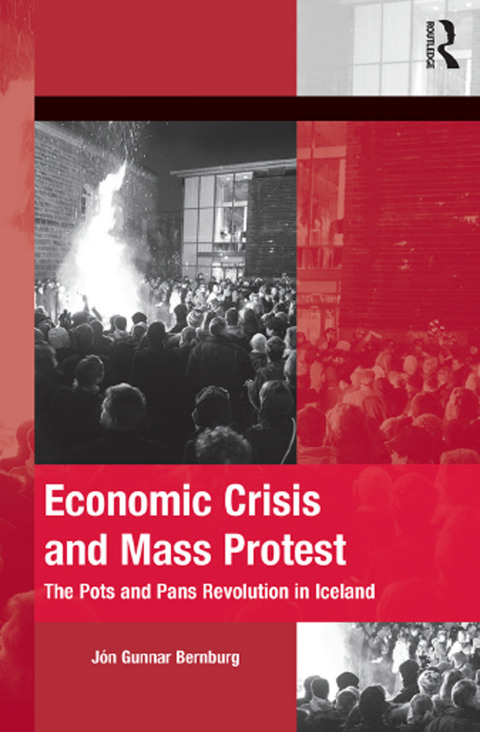Description
Efnisyfirlit
- Cover Page
- Half Title Page
- Series Page
- Title Page
- Copyright Page
- Contents
- Figures
- Tables
- Preface
- 1 Introduction
- The first days of the crisis
- The emergence of protest
- The unfolding crisis and the evolution of the protest
- The significance of the Icelandic case: Iceland in global context
- Aims of the book
- Methods
- Book outline
- Notes
- 2 Context of crisis
- Breakdown theories: disruption of personal and social realities
- Implications for the current study
- Political process/opportunity: change in the political context
- Political and discursive opportunities
- Before the collapse: the historical context of the Icelandic financial crisis
- State protectionism and constraints: Iceland through the 1980s
- Globalization and invasion of free market logic: the 1990s
- Capital liberation, “the Outvasion” (Útrásin), and debt accumulation: the 2000s
- Success myths
- Undercurrent of discontent
- Warnings dismissed
- After the collapse: convergence of quotidian disruption and credibility crisis
- Disruption of the quotidian and the shared problematic present
- From credibility crunch to foreign threat to legitimacy crisis
- Conclusion
- Notes
- 3 Evolution of protest
- Studying the Icelandic financial crisis protests
- Counting protesters and police: a methodological note
- The emergence and expansion of protest, October and November 2008
- Perceived efficacy and activist innovation
- Waning participation, ongoing radicalization: December 2008
- Threatening mass protest, January 2009
- “The Pots and Pans Revolution”
- Protest threat and government breakup
- Protest participation and support among the general public: survey findings
- Fading protest mobilization, February and March 2009
- Summary: four phases of protest
- Protest policing
- Conclusion
- Notes
- 4 Evolution of discourse
- Framing as bounded (and strategic) innovation
- Studying framing in the Icelandic setting
- Neutralizing the crisis: the diagnostic framing of government leaders
- Emergence of a challenging diagnosis
- Political corruption
- Unfettered neo-liberalism
- Silencing
- A victimized public
- Lost credibility
- Threat to sovereignty
- Action framing
- Prognostic framing: the formulation of shared (minimum) demands
- Motivational framing
- Framing through performance
- Conclusion
- Notes
- 5 Individual mobilization
- Political, social, and economic incentives (and disincentives)
- Indirect effects of frames through social and situational-emotional incentives
- Economic loss, social comparisons, and relative deprivation
- Biographical availability
- Political incentives and protest behavior in the Icelandic setting
- Exposure, illegitimacy, and (lack of) accountability
- Blame
- Political views and perception of opportunity
- Motivational definitions
- Social ties and protest incentives
- Interpersonal “encouragement”
- Social networks, communication networks, and social media
- The protest site as a social attraction
- Perceptions and emotions emerging at the protest site
- Expectations and perceived efficacy
- The lure of “magical moments”
- Disagreement and protest spoilers
- Self-image
- Absolute and relative economic loss
- Social and economic characteristics of protesters (and supporters)
- Conclusion
- Notes
- 6 Conclusion
- The context of the financial Crisis: convergence of conditions conducive to protest
- Implications
- Agency, opportunity, and the dynamics of protest
- Emergence of protest discourse: framing in political, cultural – and global – context
- Individual mobilization: protest incentives in times of crisis
- Epilogue
- Notes
- Appendix A Grounded work
- Discourse analysis
- Semi-structured interviews
- Appendix B Survey data
- Reykjavík area social survey
- Measurement
- Methodological consideration: time of survey interview
- Icelandic national voting study
- Measurement
- Appendix C Regression tables
- References
- Index






Reviews
There are no reviews yet.